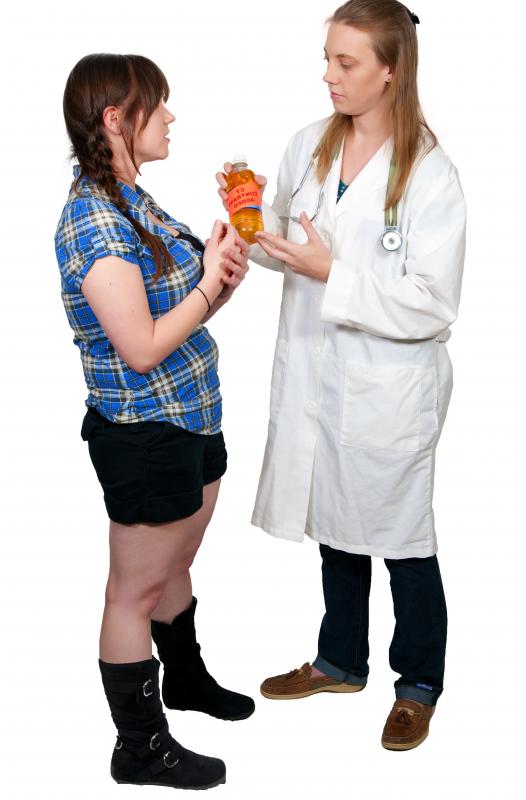At TheHealthBoard, we're committed to delivering accurate, trustworthy information. Our expert-authored content is rigorously fact-checked and sourced from credible authorities. Discover how we uphold the highest standards in providing you with reliable knowledge.
What Is an Enhanced CT Scan?
An enhanced Computed Tomography (CT) scan takes X-ray images of the body after a patient has had an imaging agent — sometimes called a contrast agent or dye — injected into their veins to enhance the areas a doctor chooses to view. The anatomical images are then viewed on a computer that uses a mathematical program to construct 3-D images from the collected data. Different agents are used for different scans. They can sometimes be taken orally or rectally depending on the area of the body being scanned. The imaging agents are considered safe, but on some occasions the patient can experience a negative reaction, although this is rare.
An intravenous catheter is attached to the patient’s arm when getting an enhanced CT scan and the imaging agent is introduced a few minutes before he is placed inside the scanner. Patients often report feeling a mild flushing sensation as the agent begins to flow through their veins. They sometimes can feel a little nauseous, although this quickly passes. Patients are typically requested not to eat for at least four hours prior to an enhanced CT scan because of this. Those with a history of asthma, heart disease, or renal disease are at increased risk for allergic reactions during the procedure.

The various types of CT scans include scans of the gastrointestinal (GI) tract, lungs, esophagus, internal organs, and brain. Barium sulfate is usually used when the agent is administered orally. Iodine-based dye is used when the agent is injected into the vein. Another method of scan employed for contrasting and diagnosing brain anomalies is the xenon-enhanced CT scan. This procedure requires the patient to inhale xenon gas during the CT scan and can also aid medical staff to assess blood flow in the brain after a traumatic head injury.

Diagnostic medicine was transformed with the invention of the CT scan. Early versions of the machine were able to produce images that were 100 times more detailed than regular X-rays. Now, highly sensitive detectors record X-rays that are rotating around the inside of the scanner at the rate of one revolution per second. With the enhanced CT scan, doctors are able to view the minutest detail in muscles and soft tissue. It has also helped with procedures such as radiation therapy, allowing doctors to gauge the amount of radiation needed in correlation to the size and consistency of cancerous tumors.
AS FEATURED ON:
AS FEATURED ON:














Discussion Comments
@anon338495: Details about why the contrast is used:
"for contrasting and diagnosing brain anomalies … can also aid medical staff to assess blood flow in the brain after a traumatic head injury … view the minutest detail in muscles and soft tissue … allowing doctors to gauge the amount of radiation needed in correlation to the size and consistency of cancerous tumors."
You don't give any details about why the contrast is used, we can only infer from the name itself. What can be seen with contrast that can't be seen without it?
Post your comments